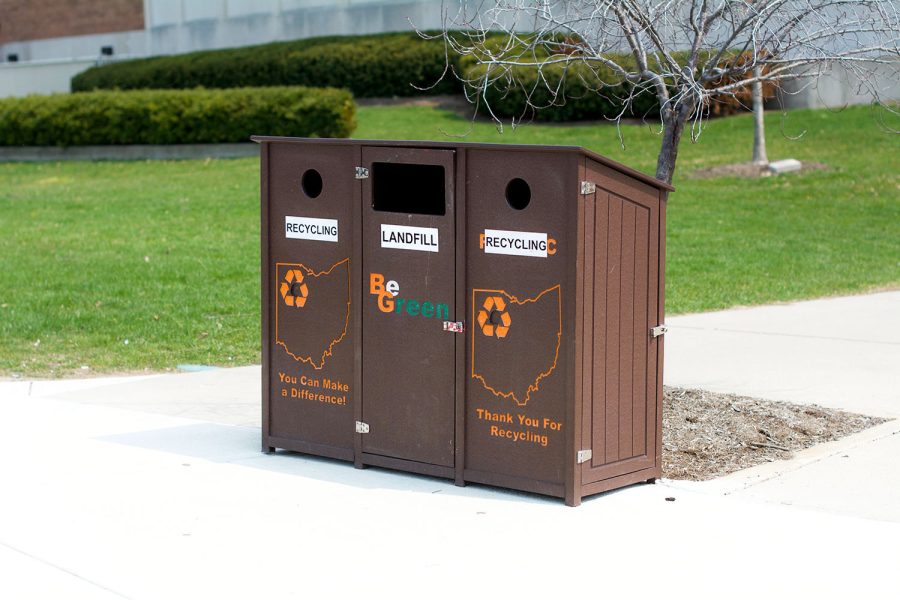The hit song “Thrift Shop” by hip-hop newcomer Macklemore seems to have more to offer than just a catchy beat when it comes to influencing listeners.
Consignment, thrift and second-hand stores are growing in popularity, especially among college students.
All three types of stores are resale outlets. Consignment stores tend to uphold pricing and product quality highly, as well as paying money for the items. Second-hand stores bargain with sellers and usually clean the items while thrift stores run solely on donations.
Freshman Taylor Lawwell said she shops at all three types of used item outlets at least once a week.
“Consignment stores, Goodwill, Ohio Thrift, Salvation Army; I go to all of them,” Lawwell said. “What’s the point in going and paying full price for something, when most likely, it’s going to be at a thrift shop in good condition?”
Much like the song says, thrift store finds are one of a kind. A consignment store downtown, Mosaic Consignment Studio, lets shoppers bring their vintage and high quality clothes to be sold at the store and receive 50 percent of the profit. Colleen Miller, owner of Mosaic, said the clothes brought in are typically bought within the same day.
“We have consignors coast to coast and even students from different states at the University who bring in unique stuff from all over the place,” Miller said.
In the retail world, while the song may or may not have an effect on bringing up sales during the slow months, Miller said she could see how the song is an eye opening idea as a retail alternative.
“One of our employees pinned it on our Facebook page,” Miller said. “We thought it was pretty funny.”
Abigail Cary, owner of Abigail’s Attic, a second-hand store, said it’s still a little too soon to see any type of outcome from a song this quickly.
“I do think it’s great that there is an artist out there who is helping to promote second-hand resale,” Cary said. “I think it’s great, I love that song.”
Sophomore Casey Carson said she would pick shopping at a thrift or consignment store over going to a retail store every time.
“My favorite thrift store find was a pair of pink flats with flowers on them that were just so perfect,” Carson said. “It was meant to be.”
While some stores might have seen a shift in revenue due to the popularity of “Thrift Shop,” some regular thrifters see an end to the trend soon.
“I can see the song as a trending thing, but it may die down after a while,” Lawwell said. “For now, it’ll be a big trending thing.”
Carson agreed and said she doesn’t see a big increase in more thrifters due to the song’s debut, but has noticed an increase of customers because of the prices.
“I’ve noticed a lot of people on a college campus do it because it’s just cheaper,” Carson said.
What these stores provide for college students is a cheaper way to look original, Lawwell said. Miller agreed, and said Mosaic tends to attract the young adult crowd.
“As a college student, we don’t always have a lot of money to go out and shop, so it’s nice to find things that are cheaper,” Lawwell said. “At places like Forever 21, there are four or five of everything. I don’t think I’ve ever seem anyone with the same clothes as me if I got them at a thrift store.”
While January and February tend to be slow in retail, Cary and Miller are already planning for the spring season.
Abigail’s Attic is planning on hosting yard sales in front of the store and Mosaic will have models showcasing spring items during the Art Walk downtown April 27.
With or without the song’s influence, thrift, consignment and second-hand shopping on campus doesn’t show any signs of slowing down.
“The styles are just so unique,” Carson said. “I like that no one else has it and sometimes you find really cool things.”







